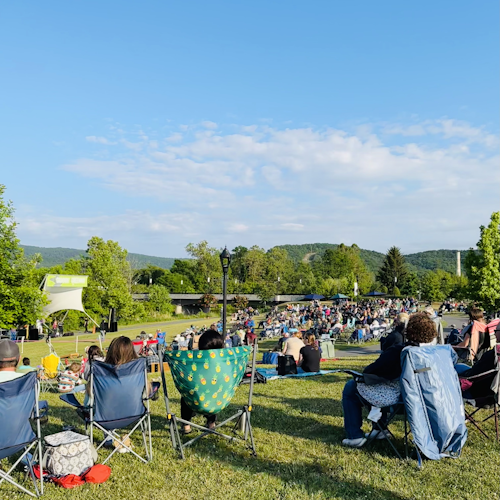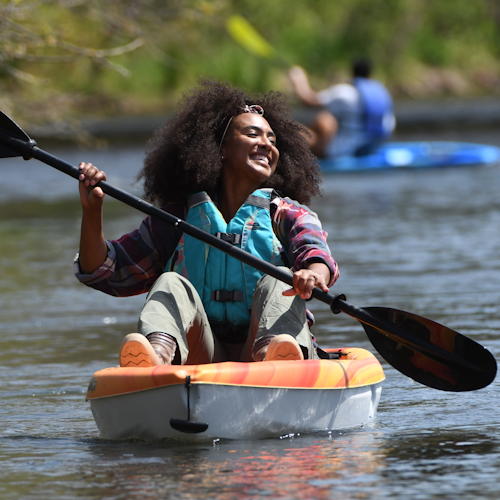Make Waynesboro your Base Camp for Historical Adventure
Virginia is a true hotbed of history, and Waynesboro is well situated for accessing a lot of historic sites and museums dedicated to history. In fact, with its beautiful surroundings, lively downtown, and easy access to quality food and lodging, Waynesboro is the perfect basecamp for your historical adventure. Read on for all our nearby historic sites of interest.
Local History
Make sure to visit the Waynesboro Heritage Museum to see artifacts, photographs and maps, textiles and furniture, and more that pertain to the city’s history. Learn about Mad Anthony Wayne, the railroad, as well as Waynesboro’s history of industry and education. The museum itself is located in a restored 1908 bank building, and you can even tour the vault! The Waynesboro Heritage Foundation also operates the Plumb House Museum, thought to be the oldest surviving log building in town. It survived the 1865 Battle of Waynesboro and exhibits a variety of Civil War artifacts and documents.
Part history exhibit, part hiking trail, the Claudius Crozet Blue Ridge Tunnel sends visitors to the past as they walk through a mile-long restored 1850s railroad tunnel. Interpretive signage explains how the tunnel was constructed by mainly Irish immigrants using hand tools and black powder.
Basic City is a Virginia “lost town,” that sprang up in the late 1800s when the railroad came to town and crossed with an older line. In less than a year, it went from two buildings to a population of over 1,000 with both residential and industrial areas. It merged with Waynesboro in 1923. You can see some of the old buildings if you tour the Basic City area of Waynesboro on the east side of the river, and you’ll find relics and articles at Basic City Beer Co. and The Showroom.
Waynesboro was named for Mad Anthony Wayne, a brigadier general in the Revolutionary War known both for his bold military tactics and fiery temper. He is perhaps best known for leading a desperate bayonet charge to escape a trap set by a much larger group of British soldiers during Virginia’s 1781’s Battle of Green Spring. He also had a musket ball in his leg that was never removed. For a fun challenge that pays homage to Waynesboro’s namesake, mark your calendar for the Mad Anthony Mud Run, a 4-mile race with more than a dozen obstacles, held the last Saturday of February each year.
The Rosenwald School was a segregated school built in 1924 that originally only had four classrooms to serve Waynesboro’s Black population; it was part of a large network of segregated Rosenwald Schools built throughout the country during this time. That school was replaced in the 1950s and continued to graduate students until integration began in the school system in 1965. At that point, it became Wayne Upper School, and in 1982, it became the operations space for the Department of Parks and Rec. If you’d like to tour the space and the Black History Museum, please call (540) 836-0024 to make a reservation.
Sherando Lake Recreation Area has quite a history. During the depression, Camp Sherando Lake was built to house the Civilian Conservation Corps while they constructed the nearby Skyline Drive and Blue Ridge Parkway. Later, during WWII, it was renamed Camp Lyndhurst and was a P.O.W. camp that housed nearly 300 Axis soldiers. Camp Lyndhurst was active for 17 months and the prisoners helped with area logging, farming, and apple orchard products before being sent home at the end of the war. Keep an eye on the Wayne Theatre’s event calendar, as they occasionally show “In This Land – The Camp Lyndhurst Saga,” a documentary that showcases the fascinating history of Camp Lyndhurst. You can also stream this documentary, as well as “The Tunnel”, a short documentary about the Blue Ridge Tunnel, for free on YouTube.
23,000 square-foot Swannanoa Palace was built out of Italian and Georgian marble in 1912 by railroad magnate James Dooley as his escape from Richmond’s hot summer weather. The towered, ornately landscaped structure also boasts the largest Tiffany window to be found in a private home. The building opens on select weekends for events, photoshoots, and private tours. Nearby, find the Humpback Rock Pioneer Farm at Blue Ridge Parkway at Milepost 5.9. Though the buildings have been moved from their original locations, the site shows how Appalachian settlers lived and worked long ago.
Further Afield
Drive over Afton Mountain to Charlottesville to explore Thomas Jefferson’s Monticello, where you can spend the day touring the house and grounds designed by our country’s third president. You’ll learn about Jefferson’s innovations in architecture and agriculture as well as the lives of those who lived and worked there. Interestingly, Natural Bridge State Park was also once owned by Thomas Jefferson. This 215-foot limestone bridge arches over a creek. The living history Monocan Indian Village exhibit will help the past come to life.
James Madison’s Montpelier is where the nation’s 4th president lived. Exhibits explore the house, gardens, and old-growth forests, and emphasize the importance of all the lives that lived there, regardless of color or class.
James Monroe’s Highland shares a “network of overlapping stories” with the visitor that help provide a sense of American history during Monroe’s 50-year political career. You’ll learn about the lives of “craftsmen, diplomats, enslaved workers, presidents, overseers, artists, friends, relations, daughters, and wives.”
Folks who are interested in the presidency won’t want to miss the buildings and garden-tour-favorite grounds of the Woodrow Wilson Birthplace and Presidential Library in Staunton. Visitors can learn about Wilson’s life and presidency. Exhibits also include WWI trench warfare, the history of the enslaved people who worked there, and more. While in town, find your way to Thornrose Cemetery, a park-like space constructed in 1849 that includes elaborate and haunting architecture and monuments to the 1,777 Civil War soldiers buried here. And though it’s not an actual historic site, Staunton’s also home to the Frontier Culture Museum, a living history museum that explores the lifestyles of the early residents of the Shenandoah Valley, starting with the Native Americans.
Head down to Rockbridge County to tour McCormick Farm, where the mechanical reaper was first envisioned and tested before it went on to revolutionize agriculture. Nearby Lexington has small museums on the campuses of Virginia Military Institute and Washington and Lee University. VMI also owns the nearby Stonewall Jackson House



